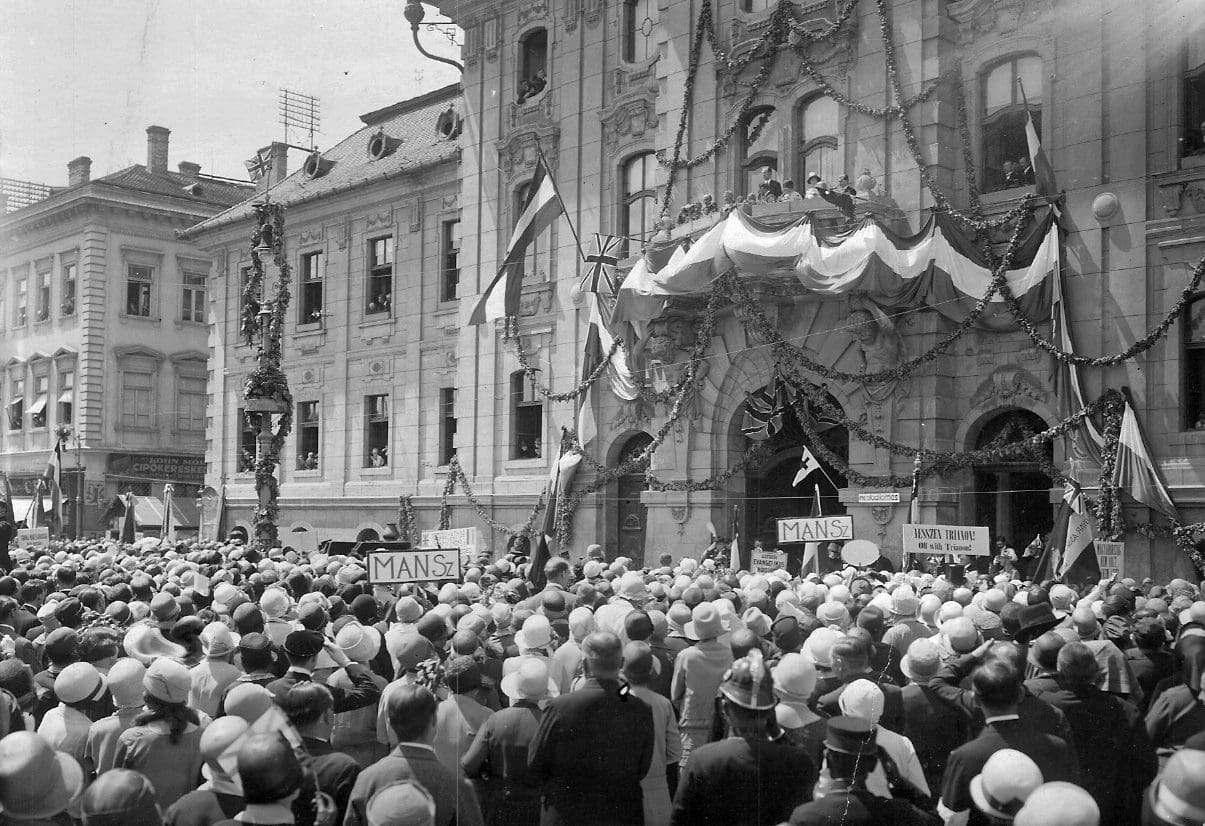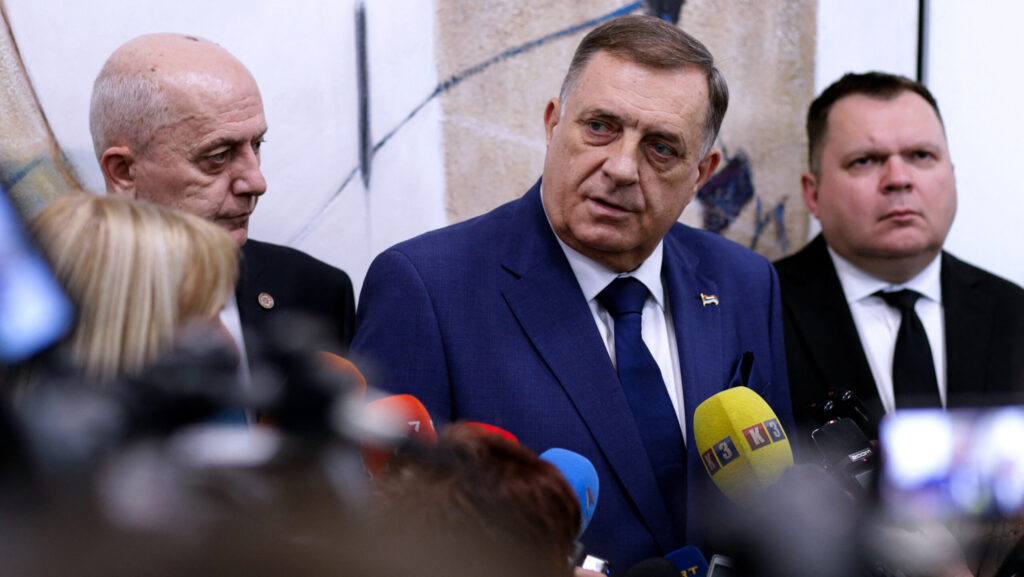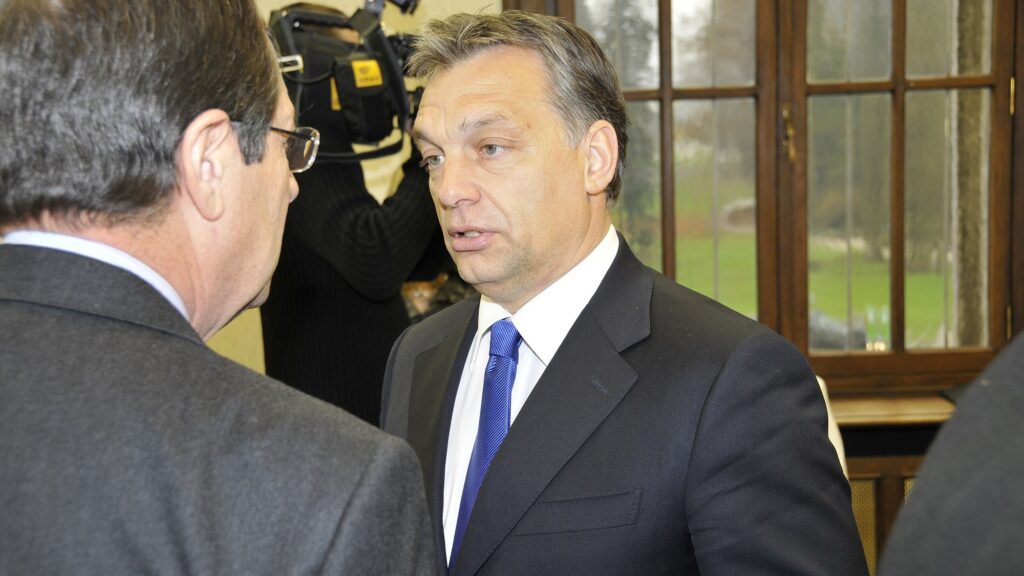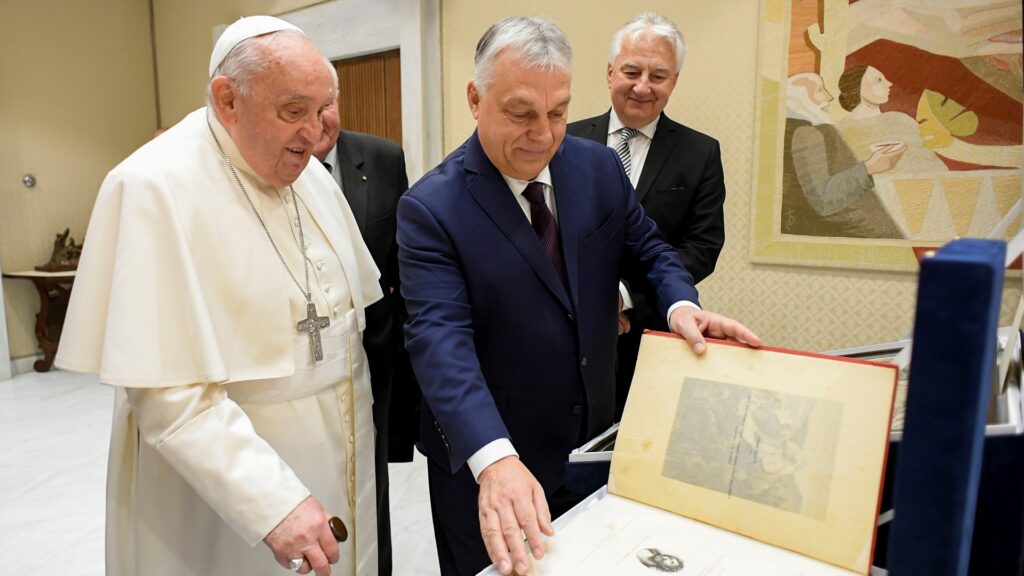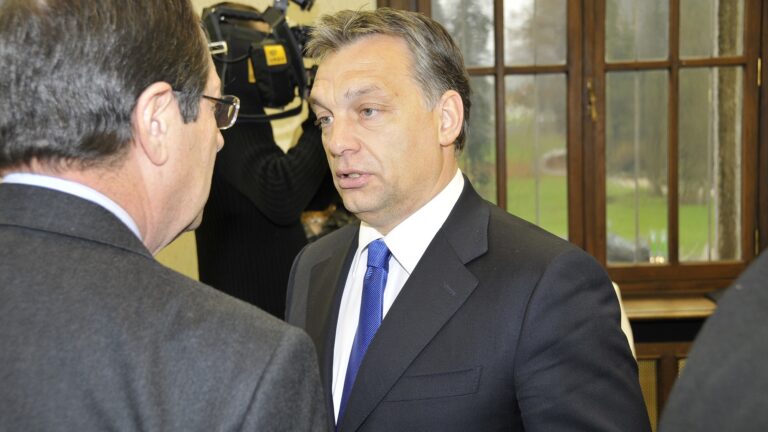At some point in the early 1920s, two polemicists, István Milotay and György Oláh, who were still just gaining recognition as talented right-wing journalists, explored the villages of Eastern Hungary for their sociological work. Getting close to the Trianon border, István Milotay described his afterthoughts as follows: ‘we were merely a few kilometres away from the border, but never so far that we didn’t feel the barrier: it was something you couldn’t see, yet it felt like an insurmountable wall. Bit by bit, it seeps into people’s everyday conversations with the indifference that slow habits cause, and which is terrible precisely because it seems so familiar. We try and keep the illusion awake in ourselves that we can cross to Nagyvárad or drop by to Nagyszalonta and then run from Makó to Arad, as it used to be – so natural, so self-evident. And then all of a sudden, we realise it is no longer possible, that we are locked up, that we have to run around inside a wire fence and it is better to stay away from it as if to spare ourselves; then perhaps we might not remember its existence for a moment. Gyurka Oláh says bitterly and jokingly that not only his right arm but almost his entire right side has withered from the idea, the constant proximity of this wire fence’.[1]
György Oláh, the later Arrow-Cross publicist, likened his feelings here to Psalm 137, and it is true that, looking at contemporary public life, the nation seems to have made a united vow to deny, criticise, or even revisit the consequences of the Treaty of Trianon. Moderate conservative, Jenő Rákosi made a solemn vow not to write an article in which he did not demand a revision, [2] while a government paper said that revision is “the way, the truth and life”—again, quoting the New Testament. [3] Lutheran bishop Sándor Raffay even directly propagated resistance: ‘I would not be afraid of being occupied by foreign powers again,” he said one day before the ratification of the peace treaty.’[4]
The strong anti-Trianon course of the late 1920s was not yet a government program, but on the contrary, the Hungarian leadership wanted to give the impression of a reliable and non-threatening country
The treaty back in 1921 was still a fresh experience, and public discourse was determined primarily by the processing of the massive loss of territory. There was undoubtedly some feelings of insult and some desire for proving oneself in this public discourse. The much quoted István Bibó came to the conclusion that the reason for “grievous irredentism” was the fact that it was the “counter-revolutionary” system that had signed and ratified peace, and perhaps there was a grain of truth to this.[5] However, the strong anti-Trianon course of the late 1920s was not yet a government program, but on the contrary, the Hungarian leadership wanted to give the impression of a reliable and non-threatening country. According to a memorandum prepared for the Ministry of Defence, ‘all noisy actions promoting the forcible recovery of our territory must be prevented’ and ‘quiet, discreet propaganda’ must be pursued instead.[6] Until then, the “program of our foreign policy” was, in the words of Gusztáv Gratz, ‘compliance with the Treaty of Trianon’.[7] The Teleki and Bethlen governments of 1921 supported the revisionist movements only in such a way, secretly redrawing maps and weaving plans to reshape the boundaries: some of these were indeed feasible, while others proved utterly illusory.
Such ambitious plans included, for example, a plan drawn up in the spring of 1920 to occupy Austria together with the early German National Socialists, and then Czechoslovakia together with Bavaria and the newly formed counter-revolutionary Austria. After that—the ambitious plan said—Soviet Russia would have to destabilised by printing fake rubles; then Germany, Hungary, and anti-communist Russia could declare war on the Entente, win the new world war, and redraw the map of Europe. The rather astonishing idea—lacking, of course, any basis for reality—also reached Miklós Horthy, and the governor gave his consent to the plan.[8] Another draft, personally developed by Horthy, identified the Romanians as our “main enemy”; according to the document, a communist coup d’état must first be supported in Romania, and then, in agreement with the Croats, Ukrainian nationalists, and the “Slovak legions,” our eastern neighbour must be occupied by at least the spring of 1921.[9]
And although the last document presented here dates from the late 1920s, the plan is a good illustration of the occasional ridiculous nature of such efforts: the plan was to run over the Czechoslovak border at midnight, setting soldiers’ barracks to flame and shoot ‘those who flee unsuspectingly’, As a diversion, the text suggested lighting ’forest fires’ and ‘during implementation… loud shouting, in which the public is involved, and the spread of rumours in the background’. Building on the ‘cooperation of Slovaks’, the plan concluded that ‘we can achieve significant success due to the moral and military supremacy of our people’; of course it is questionable whether the “loud shouting” of the local population meant military supremacy here.[10]A report in December 1920 even found that the Hungarian population along the border was uninterested in the issue of revision. Even if we attacked our neighbours, the document said, the population would be ‘motivated not by a patriotic feeling but by financial interests’—if it would be motivated at all.[11]
A common factor in the above plans was that it was built on the cooperation of the surrounding peoples. Hungarian foreign policy, believed firmly that Slovak nationalists would have been ready to reintegrate into Hungary, only to get rid of the Czechs. Indeed, a British report written in London in 1921 stated that ‘there is reason to say that the Czechs had achieved in two years what the Hungarians had not achieved in two hundred years: namely, they had reconciled the Slovaks and the Hungarians’ and, with some confusion, that ‘Slovakia has become a happy hunting ground for the Hungarian propagandist, whose work bears good fruit there.’ On the Czech side, the Slovak independence movement was considered a “Hungarian machination”.[12] The journal Nem, Nem, Soha (No, No, Never), edited by the famous writer Ferenc Herczeg, published the nationalist writings of František Jehlička, i.e. Ferenc Jehlicska a Slovak priest and nationalist. ‘I can’t be long’ and ‘the Slovak-Hungarian reconciliation will take place’, the articles promised.[13]
‘Slovakia has become a happy hunting ground for the Hungarian propagandist, whose work bears good fruit there’

PHOTO: FORTEPAN / FORTEPAN/ALBUM009
The idea that the policy of Hungarian supremacy, experienced during the dualist period, may have had something to do with the dissatisfaction of the neighbouring peoples, did not occur to the editors. Bishop Sándor Raffay, who was active in the revisionist movement, wrote enthusiastically in his memoirs about the Slovak kids he had educated during his early years as a teacher: ‘I formed them into Hungarians’.[14] A 1921 military report saw Jehlička and his work more realistically: the politician was making a ‘series of U-turns’, calling him ‘an unsteady, hasty and overheated chameleon who has no intention of actually joining Hungary’.[15] The fact that the Slovak nationalists had no intention of returning to Hungary may have been correct in the report; that the politician in question would have been a ‘chameleon’, maybe not so much. In his own way, Jehlička explained to friar István Zadravecz what he wanted from Hungary: ‘some kind of autonomy’.[16] What this meant remained questionable, but it was clear that neither the Slovaks nor the Croats wanted Hungary back, but their own independence.
Ironically, other possibilities for resolving the Romanian-Hungarian conflict have arisen too. At the end of 1919, the Hungarian government seriously considered the establishment of a Romanian-Hungarian personal union. In a 1921 article, Lajos Csóka already saw ‘some basis’ for this: much later, Endre Zsilinszky similarly raised the idea of an ‘Budapest-Bucharest’ axis. There was indeed something futile about the struggle with the Romanians: if Catholic bishop Ottokár Prohászka was right that the Romanians were a ‘stupid, gypsy people’, then what did it say of the Hungarians, whose ‘main enemies’ were a ‘nation of goat shepherds’, as Admiral Horthy put it not so delicately?[17] Dezső Szabó was much more enthusiastic about an alliance with the Romanians: in a letter written in 1926 he spoke of the need to bring two peoples together in order to fight the ‘German threat’.[18]
The cooperation of Eastern European peoples barely occurred to any politician and when such schemes did arise, they were only spoken of in the context of defeating a third nation
Reviewing the literature and documents related to Trianon in the first years after the peace treaty is a sad task, albeit not without some amusing moments and heavy conclusions for the historian. The cooperation of Eastern European peoples barely occurred to any politician—inside or outside of Hungary—and when such schemes did arise, they were only spoken of in the context of defeating a third nation. European unity was seen as a dead idea, and barren nationalism was the slogan of the day. Many decades of blood, sweat and hard work were still ahead of Europe to reach the current state of affairs: the merits of EU, NATO and the V4 cooperation. Not many signs of these achievements can be found in sources of the early 1920s: the job of the historian is to point out the way that had led from there to here.
[1] Milotay István, ’Az ismeretlen Magyarország’, Genius, n. d., 33-34.
[2] Zeidler Miklós, ’A magyar irredenta kultusz a két világháború között’, Budapest: TLA, (2002), 20.
[3] Ludovikás Levente, June 1923, 15.
[4] Szózat, Issues 13th and 14th November 1920.
[5] Bibó István, ’A békeszerződés és a magyar demokrácia’ (1946), and Bibó István: ’Eltorzult magyar alkat, zsákutcás magyar történelem’ (1948). Both in: Bibó István, ’Válogatott tanulmányok’, Budapest: Magvető, 3/1986, 273., 599.
[6] Nemes Dezső, Karsai Elek, ’Iratok az ellenforradalom történetéhez, 1919-1945. 3. Az ellenforradalmi rendszer gazdasági helyzete és politikája Magyarországon: 1924-1926’, Budapest, Szikra, (1959), 691–692.
[7] Világ, 22nd January 1921.
[8] Szinai Miklós, Szűcs László, ’Horthy Miklós titkos iratai’, Budapest, Kossuth, (1963), 33.
[9] Nemes Dezső, ’Iratok az ellenforradalom történetéhez, 1919-1945. 1. Az ellenforradalom hatalomra jutása és rémuralma Magyarországon: 1919-1921’, Budapest: Szirka, (1956), 200–207.
[10] Szinai, Szűcs, ‘Horthy Miklós‘, 75–79.
[11] Hadtörténeti Levéltár (HL), HM ELN C 1921, 50012.
[12] National Archives – Public Record Office (Kew), FO 371/6140, ‘Annual Report on Hungary by Athelstan-Johnson’, (1921)
[13] Nem, nem, soha, 26th April 1920 and 26th December 1920.
[14] Raffay Sándor, ‘Magamról’, Evangélikus Levéltár, 1. box, .
[15] HL, HM ELN C 1921, 50013., 1920.
[16] Borsányi György ed., ’Páter Zadravecz titkos naplója’, Budapest, Kossuth, (1967), 188.
[17] For these, see Arday Lajos, ‘Térkép, csata után. Magyarország a brit külpolitikában (1918-1919)’, Budapest, Magvető, (1990), 272.; Magyar Kultúra, 1921, 452-458.; Bajcsy-Zsilinszky Endre, ‘Helyünk és sorsunk Európában’ (Budapest: Gergely R., 1941), 321.; Prohászka Ottokár, ‘Soliloquia’, (Budapest: Szent István Társulat, 2/1929), 9.; Szinai, Szücs, Horthy Miklós, 223.
[18] Péterfi Gábor, ’Szabó Dezső és a nemzetiségi kérdés’, Limes, (2010/2), 48.

